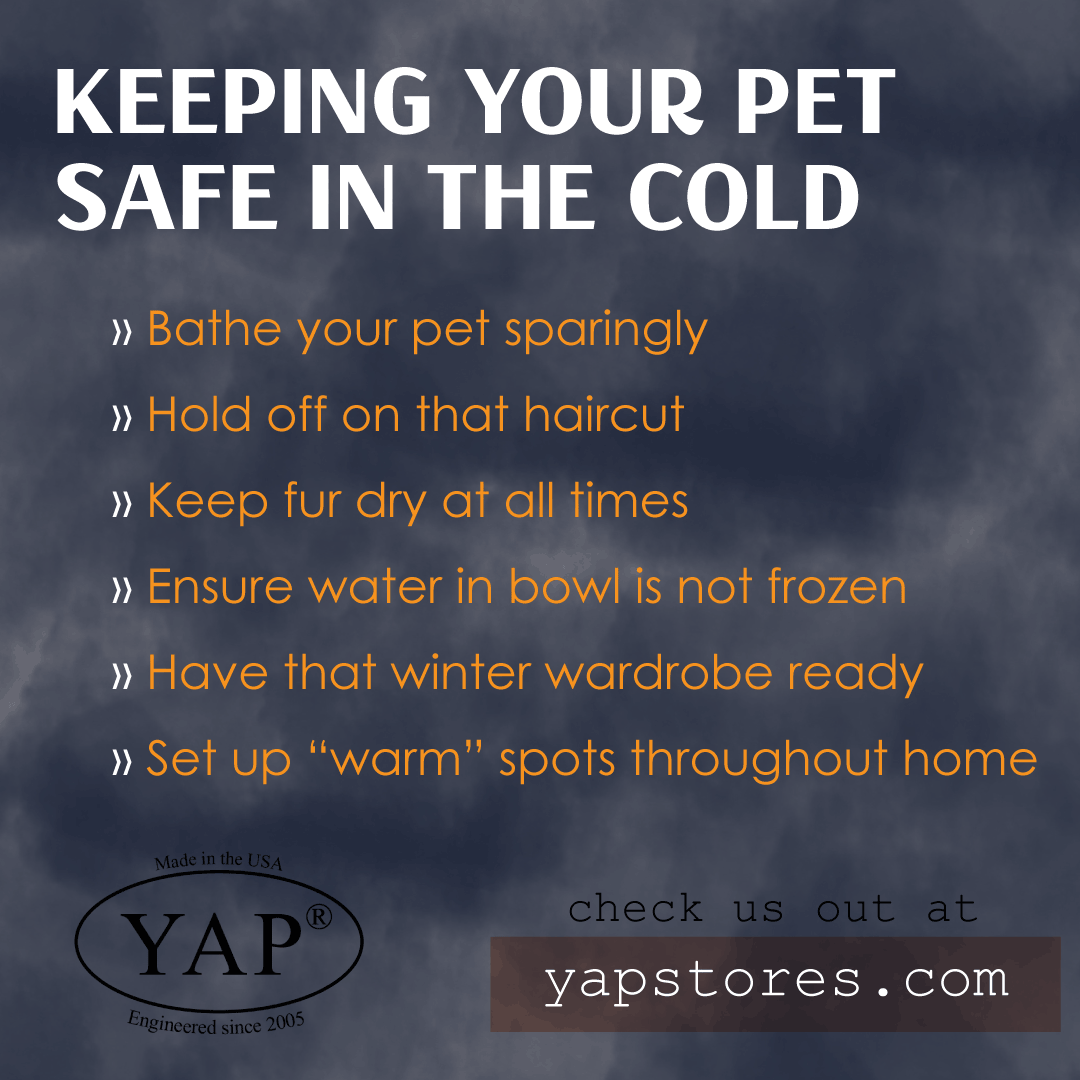February is one of the coldest months. The extreme weather can be harmful to you and your pet. Parts of the US are experiencing extremely low record-breaking temperatures. We created this guide for folks who are not accustomed to living in that extreme. We hope this assists you during these chilly times.

Check your Pet's Breed
It is a common misconception that fur will keep your pets warm. Although this isn't necessarily wrong, many common pets are unable to withstand freezing temperatures. If your dog has a short snout or is short fur/hairless, chances are that they require protection from the frigid elements. Even the fluffiest of dogs, such as the husky, may find it difficult staying outdoors for long periods of time.
Keep Walks Short
Senior dogs and those who suffer from arthritis or other ailments may find it difficult to walk in the snow. We especially recommend keeping these pet’s outdoor time to a minimum. Do not expose your dog to prolonged periods in the snow. Keep it short and fun. Once you notice any signs of discomfort, take them inside.
Extreme Cold Protection
Pets exposed to low temperatures for prolonged periods of time are more susceptible to hypothermia and/or frostbite. Signs to look out for include lethargy, shivering, and paleness of skin. Frostbite usually precedes hypothermia. Areas commonly affected include the tips of ears, pads of feet, and tail. Signs to look for include a bluish-white hue to the skin. Ice may form in the affected area. Prevent this by keeping your pet warm using warm towels or a warm water bottle. Always keep their fur dry. Have your pet wear protective gear such as a winter coat and boots. A common rule of thumb: if it's too cold for you, it's probably too cold for your pet. If you suspect your pet is suffering from any of these symptoms, book an appointment with your vet immediately.
Keep An Eye on Your Pet
Pets are curious by nature. Many of the common things you have to protect yourself during this time are harmful to your pets. A common example is de-icing chemicals. The combination commonly used on sidewalks and walkways causes irritation to the pads of their feet. Make sure to wipe down their feet after their walk. You can also apply petroleum jelly before each walk to ensure protection. Booties are the most effective way to protect your pet on their walks. A common winter chemical to look out for is antifreeze. The fluid is sweet in nature and attracts pets and children alike. A small amount of this can kill a pet. Be vigilant when using these chemicals. Clean up any fluid left behind.
Keep Them Inside
If your pets are normally inside, bring them inside or ensure that their outside space is warm and dry. Ensure they have access to safe, indoor heat. Be wary of portable heaters and electric heating pads. They can cause burns and may overheat your pet.
Feeding Guidelines
There is some bit of controversy surrounding this one. Some folks say keeping your pets a healthy weight is best, while others recommend having them put on a bit of extra body fat is good for warmth. What we recommend is if your pets are outside often and are always in motion regardless of the weather, consider feeding them a bit extra. Pets tend to burn more calories in the colder months. If your pet is not walked as often, feed them less to avoid unnecessary weight gain. Ultimately, this conversation is a good one to have between you and your pet’s veterinarian.
